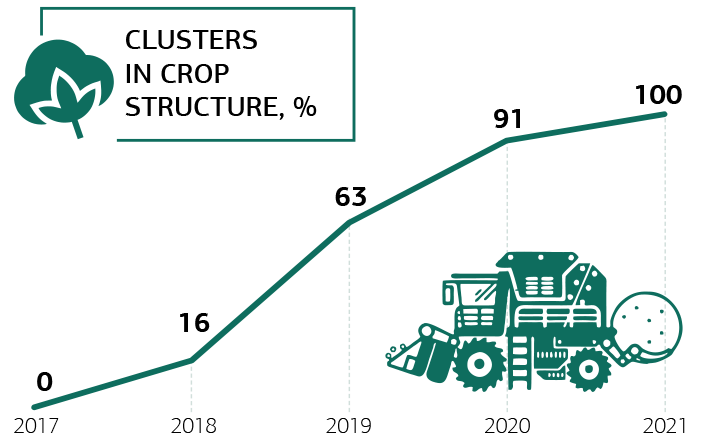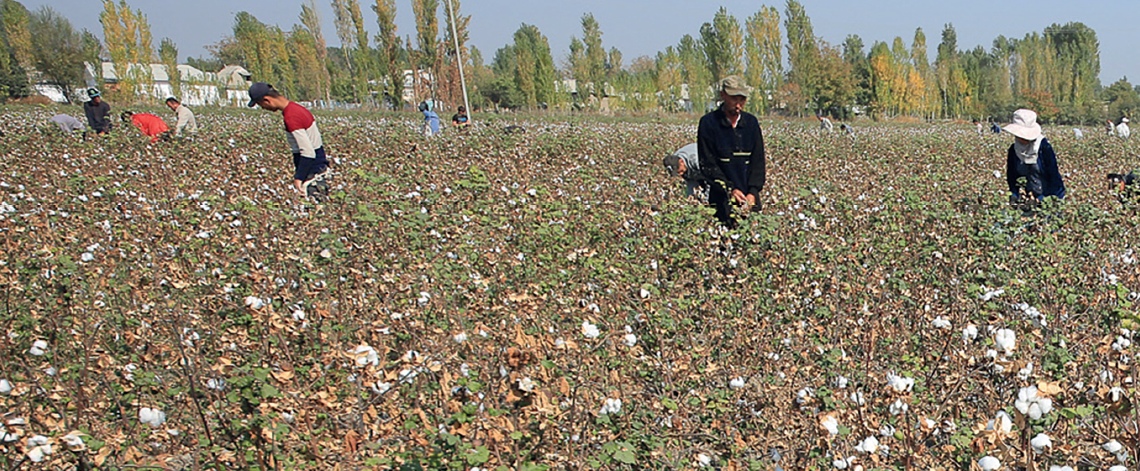Measures taken by labour inspectorate
The Government’s demonstration of a strong political will to put an end to violations of fundamental labor rights is a confirmation of the widespread commitment to the unconditional observance of human rights and freedoms.
Child labor has been eradicated, unprecedented measures are being taken to stop the use of forced labor by adults during agricultural work, landscaping and beautification of territories.
Activities are underway to ensure interaction with representatives of civil society and foreign non-governmental organizations in this field in order to guarantee the protection of the rights and legitimate interests of citizens and increase the image of the State in the international arena.
At the same time, the Government of the country also recognizes that a number of negative factors still remain that hinder the effective counteraction to the use of forced labor.
It is necessary to continue and strengthen the effective measures taken in the country to completely eradicate forced labor, as it was done in the area of child labor.
The support of the international community, an independent expert assessment of the reforms and measures taken to prevent systemic forced labor, as well as recommendations made following an in-depth analysis of existing measures, are of key importance in subsequent progress.
Based on the recommendations of John Richmond, the United States Ambassador on Special Assignments in Monitoring and Combating Human Trafficking, analytical notes by experts from the International Labor Organization, as well as the provisions of the “Reform Road Map for Uzbekistan” of the Cotton Campaign international coalition, the National Commission to Combat Human Trafficking and Forced labor, the Plan of Practical Measures (Roadmap) for further improving the effectiveness of measures has been approved.

The roadmap consists of 4 chapters and 33 points. Each chapter is devoted to the main areas of work aimed at combating human trafficking and forced labor:
- A set of practical measures to improve national legislation
This chapter contains measures aimed at implementing priority recommendations on the revision of national legislation regarding the improvement of the procedure for identifying victims of trafficking in persons in order to ensure their consistency and activity, as well as strengthening investigations and, if there is sufficient evidence, criminal prosecution of officials involved in trafficking in persons, including officials involved in the mobilization of forced labor. In addition, this chapter involves revising the definition of trafficking in persons in the criminal code in order to exactly match the definition in the UN Protocol on Trafficking in Persons and developing mechanisms to protect victims from punishment for illegal actions that traffickers forced them to commit, including for illegal border crossing and loss of personal identification documents.
- Practical measures to strengthen National capacities, increase stakeholder awareness and improve feedback mechanisms between the Government and civil society
This chapter, which contains the largest number of paragraphs, describes practical measures aimed at developing skills and techniques for combating trafficking in human beings, constant exchange of information and interaction between interested ministries and departments, creation of the necessary conditions for involving NGOs in the monitoring process, creation of the Council of Ministers of the Republic Karakalpakstan, khokimiyats of regions and the city of Tashkent "Fund for Assistance to Victims of Human Trafficking".
The chapter also contains measures to improve the skills of labor inspectors, expand the powers and rights of the Labor Inspectorate, including increasing the number of labor inspectors in accordance with international standards and requirements. In addition, it also describes mechanisms for creating independent, fair and transparent mechanisms for hiring workers by informing the public about the availability of seasonal jobs, the conditions created for these jobs and wages.
The agenda also includes such issues as the development of a manual for hiring workers for seasonal work, amendments and additions to the Labor Code, providing for the specifics of concluding an employment contract with temporary and seasonal workers, the development and implementation of the information system Elektron mehnat shartnomasi, which ensures real-time conclusion of labor contracts in electronic format, with the simultaneous recording of work experience in electronic work books.
- Conducting awareness-raising activities
In order to increase public awareness on their right to refuse to participate in cotton picking or other work that goes beyond the scope of their professional duties, it is planned to develop a large-scale communication plan for conducting outreach activities. And to eliminate the practice of requesting a fee to replace pickers or contributions from enterprises and entrepreneurs to support the harvest, it is proposed to improve feedback mechanisms, including telephone hotlines and messaging applications.
In addition, it envisages expanding the capacity of civil society activists to independently monitor human rights related to cotton production by providing unhindered monitoring access to agricultural work sites and preventing local government authorities from interfering in monitoring activities.
Another important step in ensuring the right to receive and disseminate information is the development of proposals for amending the current legislation governing the procedure for blocking access to electronic information resources and strengthening responsibility for illegal obstruction of media activities, including electronic media. Moreover, it is planned to form an expert group with the participation of independent specialists in counteracting the spread of false (fake) information in electronic media.

- Structural reforms in agriculture and the textile industry
Agriculture is one of the most promising sectors for the development of Uzbekistan, accounting for one third of GDP, providing jobs for about 3.6 million citizens and generating up to 25% of all export earnings of Uzbekistan. Therefore, the reform of this sector and the introduction of market mechanisms in its functioning will give an additional impetus to the development of the country, as a whole, and to an increase in the well-being of the people.
One of the priority areas for the development of agriculture in Uzbekistan is to saturate the domestic market with food products, achieve self-sufficiency in the field of their production and ensure food security. In this area, it is proposed to develop proposals for the introduction of market-based formation of procurement prices with a minimum / starting price that allows farmers to obtain a minimum profitability, expand the practice of abolishing cotton planting on lands with a yield of less than 15 centners per hectare for three years, and expand the area of other crops on lands allocated for cotton under a two-field farming system.

FURTHER MEASURES TO AVOID FORCED AND CHILD LABOR
From the point of view of the further prevention of forced labor and the widespread use of fair hiring mechanisms, the consistent comprehensive reform of the agricultural sector is important.

On October 23, 2019, President of the Republic of Uzbekistan Sh. Mirziyoyev approved the Strategy for the Development of Agriculture for the period until 2030, which aims to increase competitiveness in the agricultural sector and stimulate exports, ensuring an even distribution of benefits, in particular, by facilitating the direct involvement of small producers and the population of rural areas in sector development and improving
the quality of life in rural areas.
The document contains a number of revolutionary provisions, the implementation of which will fundamentally change the nature of the key branch of the country's economy.
According to the approved Strategy for the Development of Agriculture, by 2021, the Government intends to abandon the system of quotas for cotton production and provide farmers with the opportunity to grow it in accordance with the order of the private sector.
In solving these problems, the main tasks will be to increase the efficiency of government spending on agriculture through the gradual redistribution of public financial resources aimed at providing key public services and implementing structural change programs. Expenditures on rainfed agricultural land and public service development programs will gradually increase.
In addition, large funds are planned to be directed to research in the field of agriculture, education and the provision of advisory services to stimulate long-term development and innovation in agriculture, since at this stage only 0.2% of the total gross agricultural product is allocated for R&D in the field of agriculture. This indicator in other middle-income countries equals to 1%, and in high-income countries – 2.5%.









